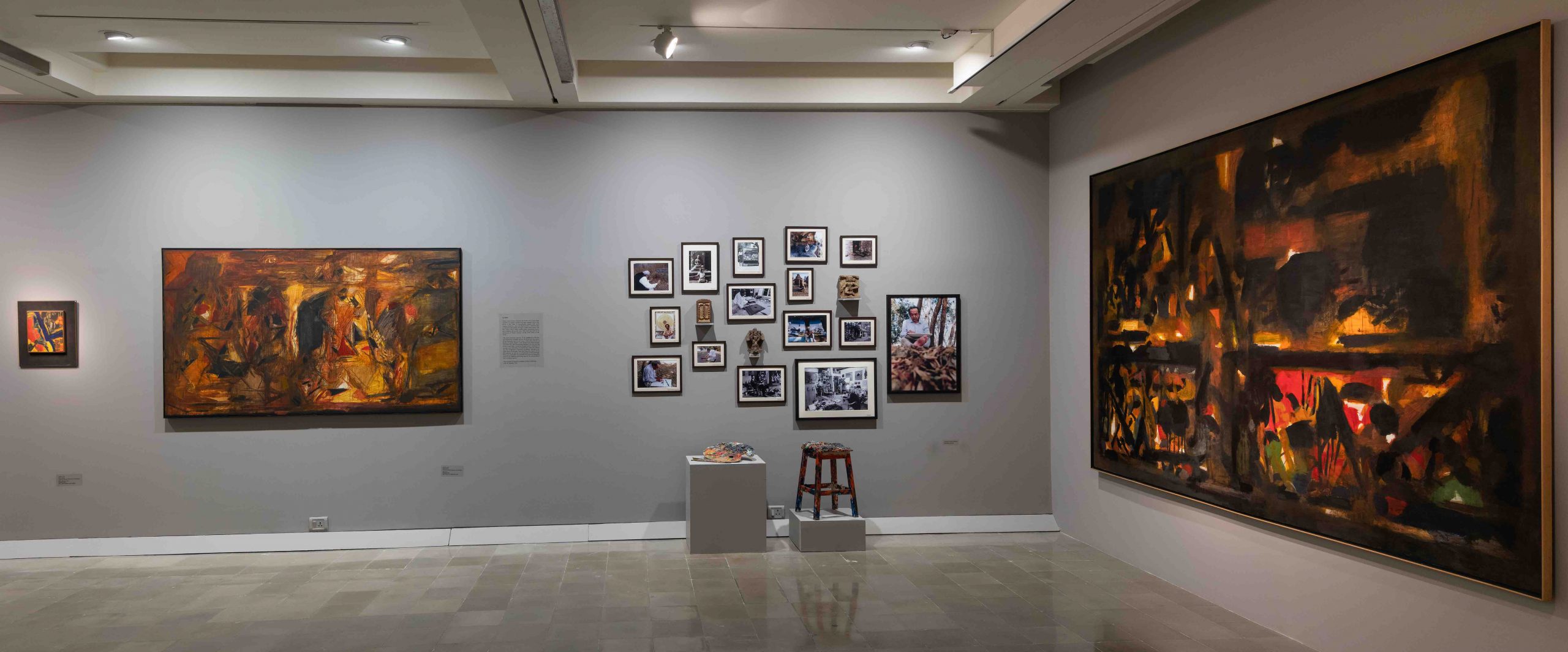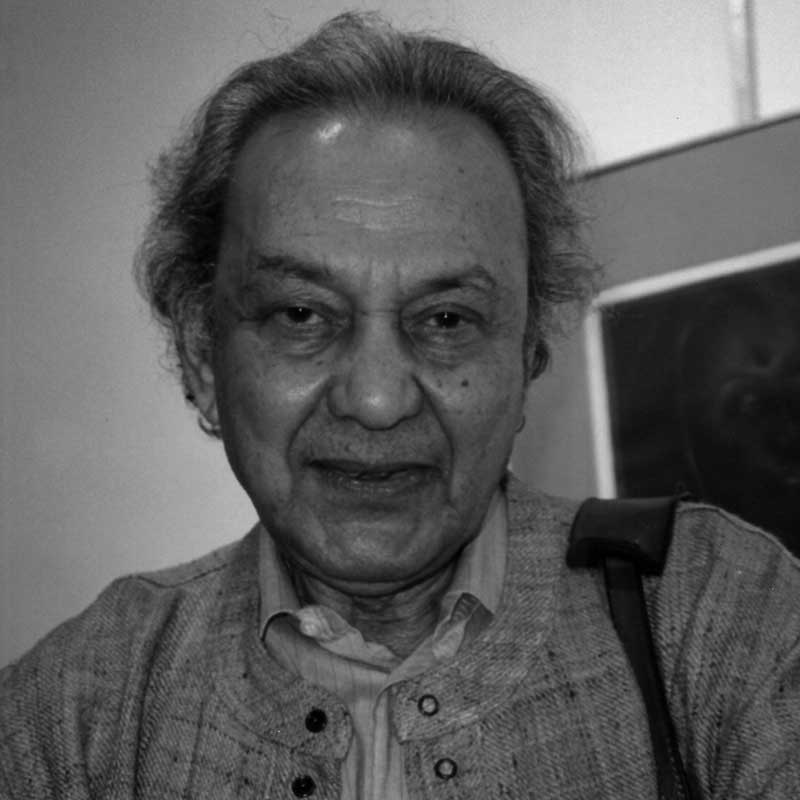
The exhibition was presented through a multi-partnership between the CSMVS Museum, Jehangir Nicholson Art Foundation, Art Musings and The Raza Foundation. It was a momentous year, in which Raza's birth centenary coincided with the Museum's 100th year. The title of the exhibition is inspired from Raza's seminal work 'Zamin', created in 1971. The show explored the artist's landscapes through a conception of place, territory, borders and belonging. 'Zamin: Homelands' featured paintings from the Jehangir Nicholson Collection and other collections in the city alongside archival material sourced from the Raza Foundation.
Exhibition catalogue: S H Raza, Zamin: Homelands
Price: 1,000 INR (Shipping charges additional)
2022 | 28 x 24 cms | Paperback | 96 pages
ISBN: 978-81-957115-0-5
To purchase: Write to us at connect@jnaf.org

Sayed Haider Raza (1922-2016) was born in a small town in the forest region of Madhya Pradesh, and later moved to Bombay to pursue a career in art. He studied at the Nagpur School of Art, Nagpur from 1939 to 1943, followed by the J.J. School of Art from 1943 to 1947. He then moved to Paris in October 1950 to study at the École Nationale Supérieure des Beaux-Arts from 1950 to 1953. After his studies, he travelled across Europe and continued to live and exhibit his work in Paris. In 1947, he co-founded the revolutionary Bombay Progressive Artists’ Group along with K.H. Ara and F.N. Souza. This group set out to break free from the influences of European realism in Indian art and promote the Indian inner vision.
In his youth, Raza witnessed significant moments in the nation’s changing history. Present at the cusp of Independence, his art was informed with the hope and aspirations of a new nation and the mobility it afforded. However, the optimism of independence was offset by personal and political events: national discord, Gandhi’s assassination, the death of his parents, and a separation from his siblings through Partition. These losses impacted Raza and were perhaps the genesis of his ideas of ‘desh bhakti’ and longing for the lost land in his later works. These sentiments were further distilled through his alienation when he resided in France.
His works mainly consist of abstracts in oil or acrylic, with a very rich use of colour, replete with icons from Indian cosmology as well as its philosophy. His work evolved from experimenting with currents of Western Modernism in the 1940s, by painting expressionist landscapes and townscapes inspired in part by the bucolic countryside of rural France, to more abstract landscapes of the mind eventually incorporating elements of Tantrism from Indian scriptures. These landscapes were characterised by gestural brushstrokes and impasto application of paint.
Among the first Indian diaspora artists, Raza his work encapsulated the profound experience of expressing one’s identity through the eyes of the other within a global context. His journey from rural India to France, and eventually back to India, shaped his idea of kinship to place. The external to inward gaze, meshed ideas of the native and the foreign, the East and the West; the quest for a rootedness in one’s origins is observed in many of the artists who moved to the West. For Raza, this meant a deep study of Indian aesthetics, spiritual scriptures, and revisiting his childhood – to rekindle a sense of wonder and meaning to nature and the environment.
Raza imbued meaning in form and colour through ancient Indian aesthetics and cosmology. While abstraction was largely regarded as a creation of Western modernism, his practice grounded abstraction in Eastern thought, referencing primordial concepts of sacred geometry and power diagrams of yantra and tantric philosophy.
For Raza, the ‘Bindu’ marked his arrival, by making an icon that was universal in form and rooted in the nation. It afforded multiple associations and meanings, representing the centre of creation and existence progressing towards forms and colour as well as energy, sound, space, and time. It took his work deeper and brought in his new-found Indian vision ethnography.
He later added newer dimensions with the inclusion of themes around the ‘Tribhuj’ or Triangle, which bolstered Indian concepts of space and time, as well as that of ‘prakriti-purusha’ – the female and male energy. Raza said his work was his own inner experience and involvement with the mysteries of nature and form which he expressed in colour, line, space, and light. His work took another leap in 2000, when he began to express his deepened insights and thoughts on Indian spirituality and created works around the ‘Kundalini’, ‘Nagas’ and the ‘Mahabharat’. He returned to India in 2010.
He was awarded the Prix de la critique in Paris in 1956, becoming the first non-French artist to receive the honour. He also received the Padma Shri and Fellowship of the Lalit Kala Akademi in 1981, Padma Bhushan in 2007, and Padma Vibhushan in 2013. He was conferred with the highest French civilian honour, the ‘Commandeur de l’Ordre de la Légion d’honneur’ (Commander of the Order of the Legion of Honour) in 2015. He founded the Raza Foundation in India for the promotion of art among Indian youth. Among numerous exhibitions during his lifetime, Raza’s works were recently exhibited posthumously at The Jehangir Nicholson Art Foundation, titled ‘Zamin: Homelands’. Raza died in Delhi in 2016.